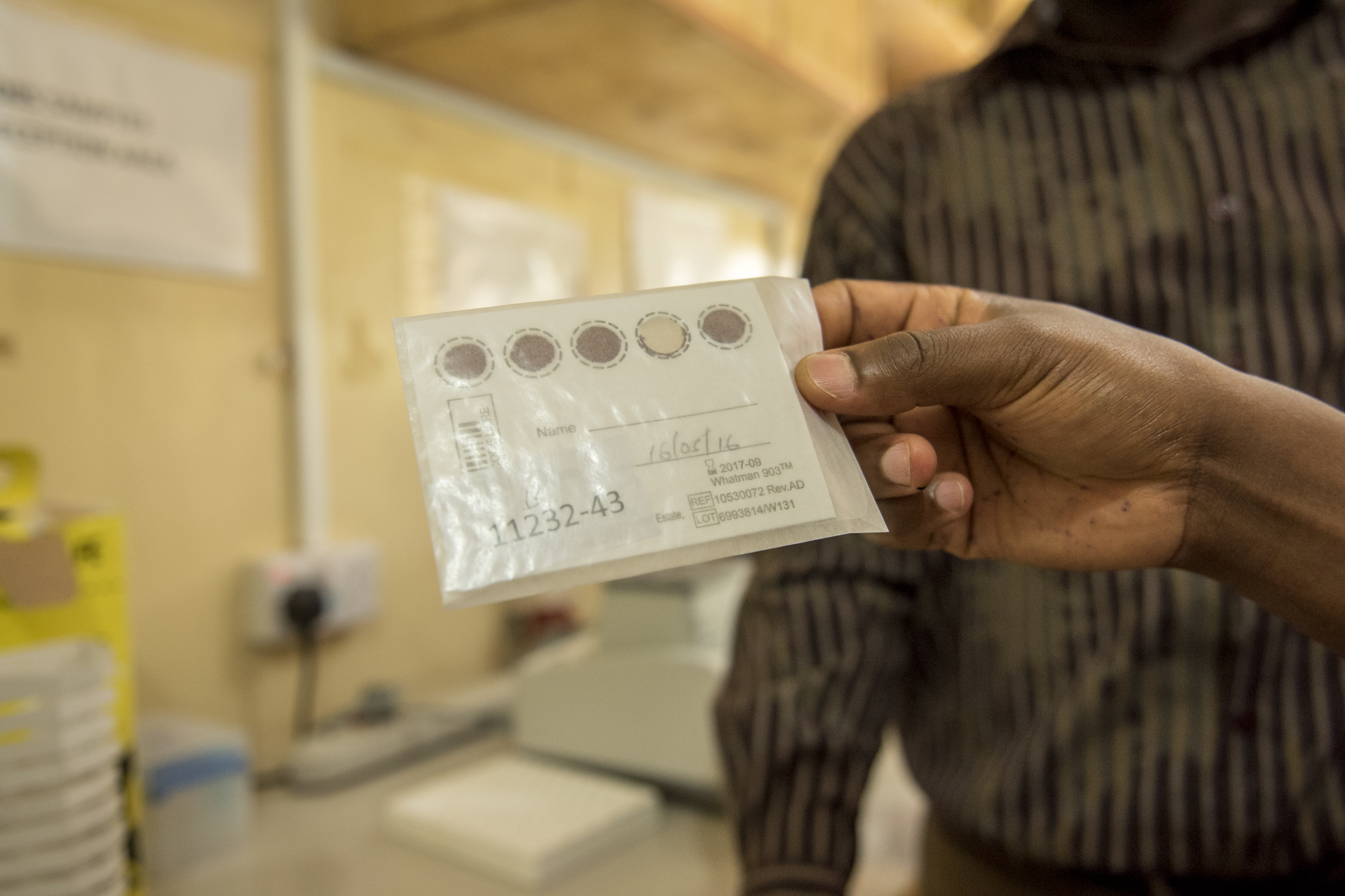TREATMENT FOR ALL IN KENYA
Walking along the corridors of Ndhiwa Sub County Hospital in Homa Bay, Kenya, Julius Omuga greets patients with hearty handshakes; his presence creating an air of familiarity and warmness.
Julius is a HIV testing counselor whose job entails linking people who test positive for HIV, to treatment. Through counseling, he helps patients who suffer from shock and denial after learning their HIV status to better understand the benefits of treatment and starting anti-retroviral therapy (ART).

Omuga also provides counseling after testing on adherence, disclosure and living well with HIV. He follows up with clients who defer starting treatment through phone calls and home visits, and links them to their facility of choice.
According to Elizabeth Glaser Pediatric AIDS Foundation (EGPAF) Technical Advisor for adolescents, Job Akuno, some people who test positive for HIV may not want to start treatment immediately because they have not fully accepted their status; they may have fears about the side effects of treatment.
“It may also be that they may not have felt sick and see no urgency for starting ARVs,” said Job Akuno.
The death of his wife from AIDS-related complications, he revealed, motivated him to help people who are living with HIV, to get on treatment.
“[When] my wife died in 2003, she had not accepted her HIV status and was not on [antiretroviral medications] (ARVs),” says Omuga.
Research has shown that starting ART early has many benefits for HIV-positive individuals, such as: prolonging life, overall improved health long term, and ART can help those who are HIV-positive to reduce the risk of transmitting the virus to others.
Challenges Linking Children and Adolescents to Treatment
“Stigma and discrimination are contributing factors to low uptake of HIV testing and counseling services, as well as poor enrollment into treatment, especially among the youth,” says EGPAF Technical Advisor for Prevention, Polycarp Musee.
“Some parents feel that ARVs may be too strong for their child so they put off starting their children on treatment until they are very sick,” he said.
EGPAF endeavors to promote access to HIV treatment and ending AIDS in children. The Kenya AIDS Indicator Survey 2012 showed that 16 percent of people living with HIV and in need of ARV treatment in Kenya, are adolescents and youth.

Following the launch of the new treatment guidelines in July by the National AIDS Control Council, anyone who tests positive for HIV will be put on treatment immediately; meaning many more Kenyans will now qualify to start ART.
“Around 84,000 clients including 5,491 children currently in care, are now eligible for ART initiation according to the Kenya Health Information System June 2016,” said Michael Waweru, EGPAF Director of Strategic Information and Evaluation.
EGPAF, through the county government, supports 188 HIV testing counselors in Homa Bay and Turkana. EGPAF has helped the clinics to build their capacity by hosting trainings, providing them with monthly stipends and calling cards.
Expanding access to treatment for all infected with HIV is at the heart of UNAIDS targets for 2020. These targets consist of getting:
- 90% of people living with HIV being aware of their HIV infection,
- 90% of those receiving antiretroviral treatment, and
- 90% of people on ART having no detectable virus in their blood.
“According to UNAIDS estimates, expanding ART to all people living with HIV and expanding prevention choices can help avert 21 million AIDS-related deaths and 28 million new infections by 2030.” (WHO, 2015)
Florence Dzame, Communications and Advocacy Officer, EGPAF Kenya
Kenya
General



